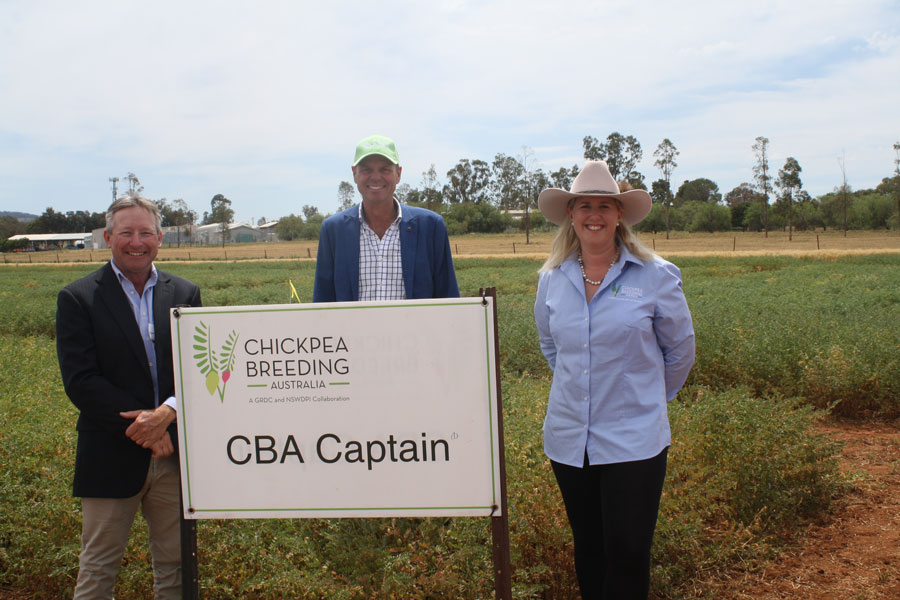A national chickpea breeding program has been launched, significantly boosting breeding capacity.
The $30 million, five-year program, called Chickpea Breeding Australia (CBA), aims to expand the geographic reach of chickpea crops with a focus on new traits for expansion areas, while improving on varieties suited to traditional growing areas. It is a collaboration between the GRDC and the New South Wales Government and will be delivered from the NSW Department of Primary Industries’ (DPI’s) Tamworth Agricultural Institute.
GRDC Chair John Woods says the program is an excellent example of collaboration between the GRDC and NSW DPI that will deliver for growers across the country. “CBA will aim to deliver adapted desi and kabuli chickpea varieties through best practice breeding and innovative technology that increases the rate of genetic gain and in turn fast-tracks delivery to growers.”
Although the majority of chickpea production increases have happened in northern NSW and southern Queensland, he says the GRDC is aware that growers outside these regions also want access to suitable varieties. “We are committed to breeding high and stable yielding varieties for a range of environments.”
NSW DPI Chickpea Breeder Dr Kristy Hobson says CBA will work on developing varieties for new growing environments in central and southern NSW and Western Australia. “We will focus on expanding the growing area, while improving outputs in traditional growing regions.”
The new investment will build on the extensive work done as part of Pulse Breeding Australia, which was also led by NSW DPI in partnership with the GRDC, Queensland’s Department of Agriculture and Fisheries, Agriculture Victoria and the South Australian Research and Development Institute.
Mr Woods says that GRDC’s historic investment in chickpea breeding had resulted in significant gains for growers. The area sown to chickpeas has increased from 243,000 hectares in 2006 to more than one million hectares in 2016-17. CBA will further that work.

GRDC Northern Panel Member Peter McKenzie with GRDC chair John Woods and Dr Georgina Pengilley NSW DPI Leader crop genetics and market access. Photo: Anne Brook
Over a 10-year average, NSW accounts for 44 per cent of national chickpea production and NSW DPI Director General Scott Hansen says GRDC and NSW DPI collaboration has seen outstanding varieties developed with improved yield, quality and disease resistance.
The new program will improve on this, giving growers an edge over global counterparts and helping to capture a greater share of lucrative domestic and global markets.
“As part of this new chickpea breeding program there will be an investment of $10 million in new infrastructure at Tamworth Agricultural Institute to bolster that market further,” Mr Hansen says.
“The investment will provide a new glasshouse, polyhouses, seed storage and processing facilities to expand variety development across current and new growing areas across Australia.”
New variety
The announcement also coincided with launch of the latest chickpea variety, CBA Captain.
Developed under the previous PBA program, CBA Captain is an erect desi type with broad adaptation to all chickpea growing regions in Australia, with early to mid-flowering options, moderate lodging resistance and excellent harvestability.
Dr Hobson says CBA Captain performs very well in the established production area, northern NSW and southern and central Queensland, and also the expansion areas of central and southern NSW and WA.
“Captain is the ‘springboard’ variety for the expansion areas.”

























































